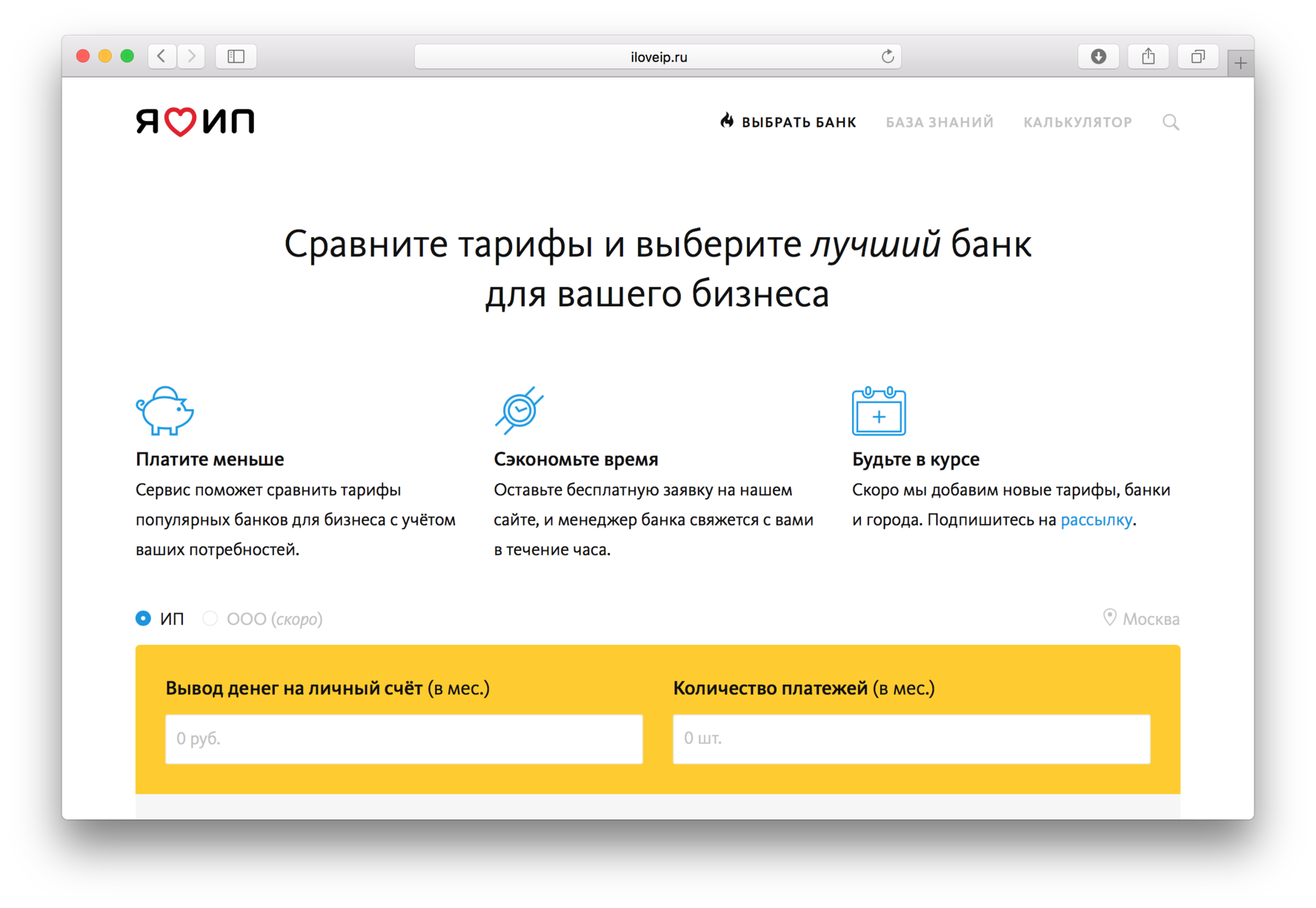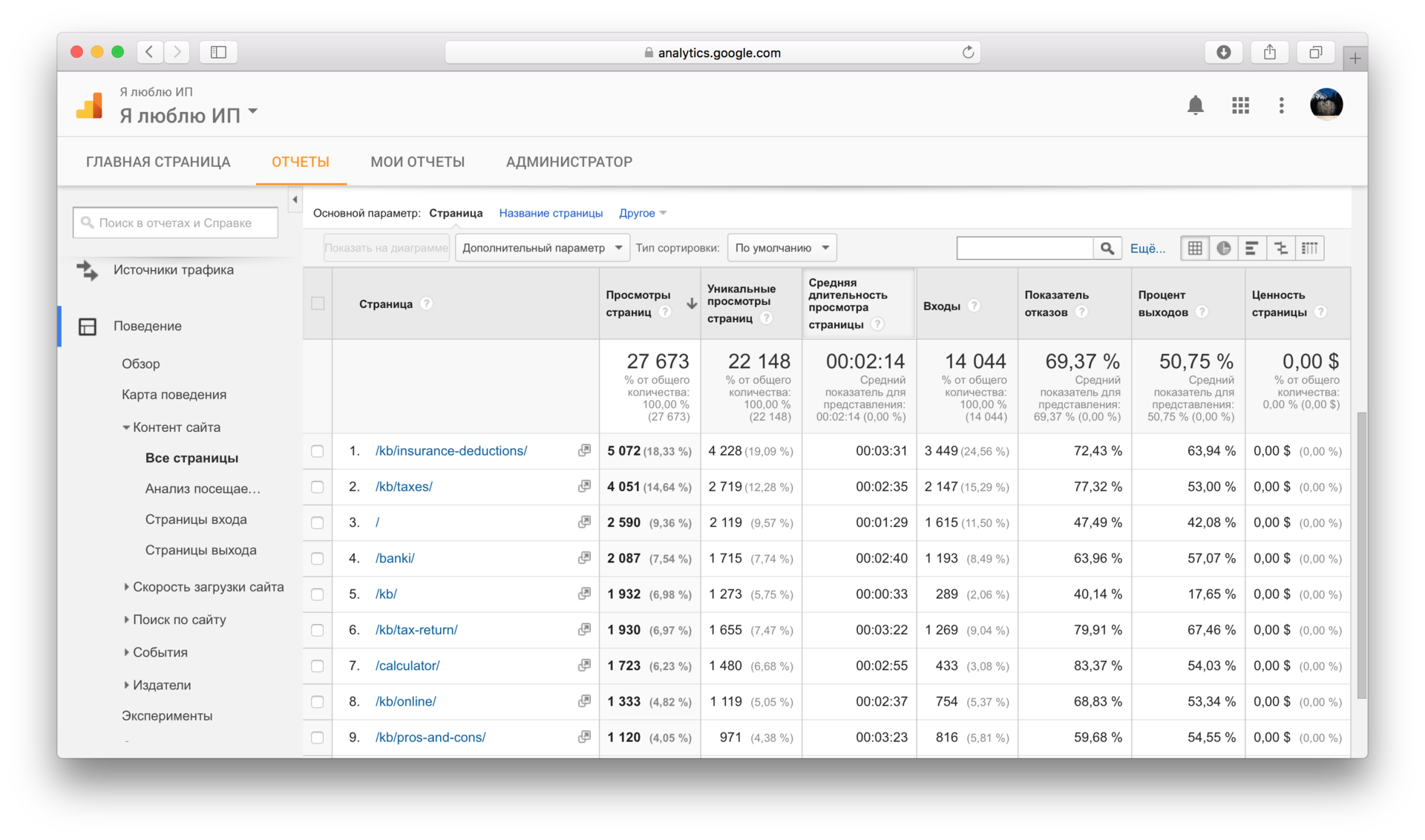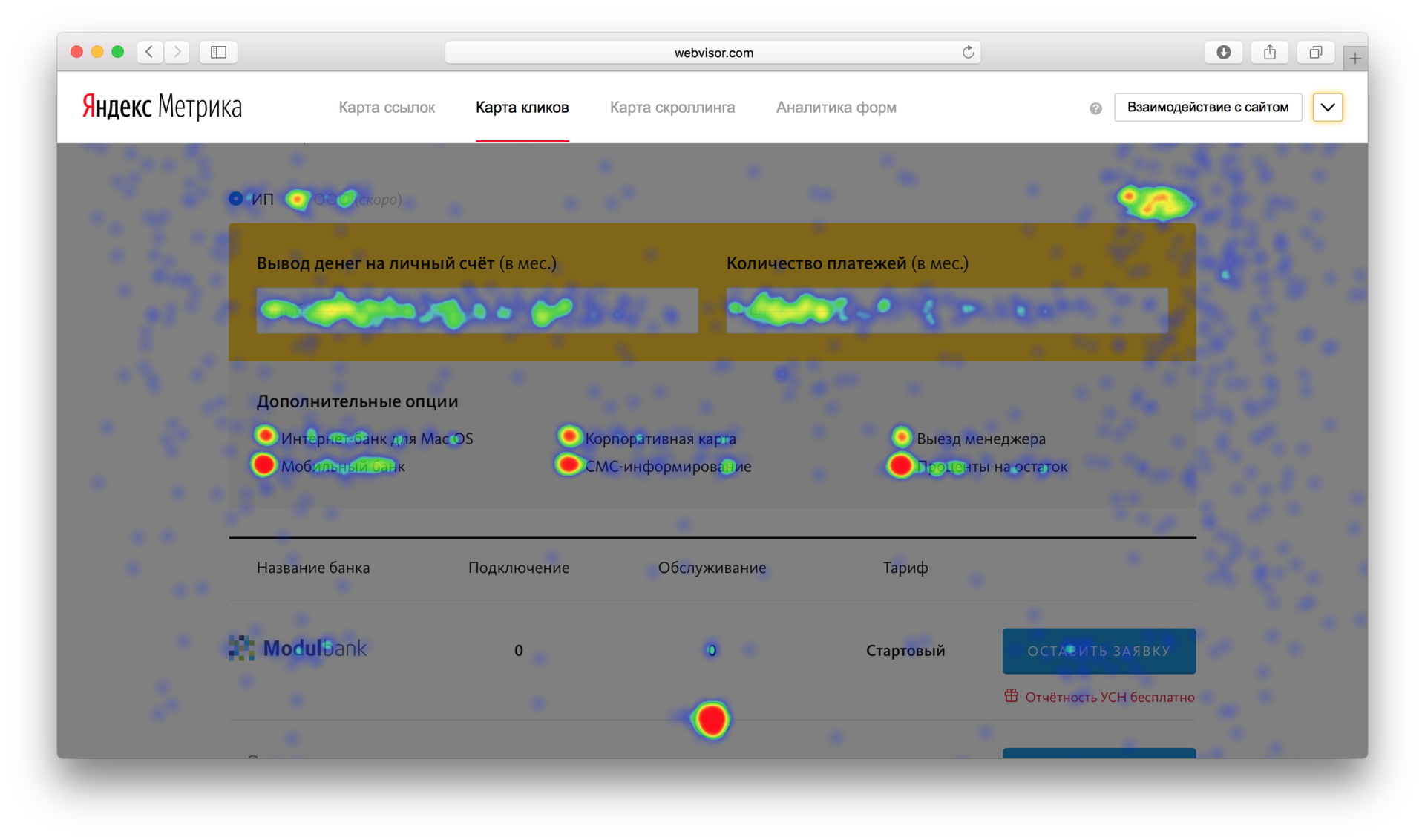4 main lessons that we learned when starting our first service

Three weeks have passed since we launched a new service on the I Love IP website, which helps to compare banks' tariffs for business. Today we want to tell how it appeared, from idea to development, and to share the findings of the product launch and the first results.
The functional of the service is simple: it calculates the cost of service in different banks based on the specified parameters, compares the tariffs with each other and sorts the banks by the cost per year. But everything is complicated by the fact that we have a static site on Jekyll.
Training. Before starting the service 6 months
The idea to make a rating of banks for businesses, to help entrepreneurs open a checking account, was with us for a long time. We have already written several reviews on this topic ( 1 , 2 ). But we wanted to make a service in which the data will be a) always relevant, b) as objective as possible. So the idea came to compare the rates of banks.
But each business has its own requests. Someone makes a lot of payments, someone needs a cash or currency account. After analyzing the rates of banks, we found that the cost of service is most affected by the fee for withdrawing money and for payments made.
We have taken out these two parameters separately, so that users enter their data there. Additionally, we decided to make a filter by options: mobile bank, Internet bank for MacOS, SMS informing, interest on the balance, etc.
Next, we selected nine of the most popular banks for business, filled out data on them in the Google table, started working on design and looking for a programmer.
Meetings with banks. Before the launch of the service 3.5 months
There were almost no problems with the design. We immediately imagined how the service should look like, and tried to think it over thoroughly. But in the process all the same, something changed. Lesson number 1 - you need to be ready to redo their work . When a design moves from layouts to the web, it begins to live a completely different life.
We found the first programmer very quickly. It was our friend who helped us make a premium calculator . He said that because of the lack of a database and server on our site (our site is hosted on Amazon S3), there may be problems. Nevertheless, he agreed to help us for a share in the project, and we began to meet with banks.
We tried to contact banks in all possible ways, called, wrote to tech support and social networks. Someone went to contact very quickly, someone ignored. In the end, after a month and a half, we concluded partnership agreements with all banks in order to directly send them applications for opening an account. By the way, we were the first to meet with VTB24 and invited them to work according to this scheme.
Development. Before starting the service 2 months
Initially, we planned to spend on development two weeks. But when we were ready to start it, our programmer changed his mind and did not become involved in the project.
Lesson number 2 - should always be a fallback . We did not have it. We did not plan to spend money on development, so the budget was very limited. We realized that the service can be done using Lambda from AWS or Firebase from Google. But they could not find specialists who were familiar with them in practice. And those who had this experience, asked for a double price.
The good old Habr came to the rescue. We found all the articles that mentioned Lambda or Firebase, and wrote them to the authors. Someone replied that he did not have time, someone said that he did not need money. But we found one person who agreed to help us in his spare time to pump over his knowledge.
Thus, it took us two weeks to find a programmer, and another six weeks to develop. Lesson number 3 - all terms must be multiplied by at least 2 . In time management there is a rule that you can plan only 60% of the time. The rest of the time will be spent on routine tasks. If the remaining 40% is not planned for them, the deadlines will inevitably move. Similarly, ours, the main part was ready very quickly, we spent the rest of the time on improvements and improvements that we could not foresee.
I'll tell you a little about the application itself.
Backend is written in NodeJS and deployed on Google App Engine. The application establishes a connection to the Firebase database (where the Google table is imported), processes applications, as described in this article , and sends messages via the Mailjet service api.
Here is a list of used libraries.
"dependencies": { "express": "^4.14.0", "firebase": "^3.2.1", "firebase-queue": "^1.5.0", "google-auth-library": "^0.9.8", "googleapis": "^12.0.0", "nconf": "^0.8.4", "node-mailjet": "^3.0.5", "q": "^1.4.1", "quoted-printable": "^1.0.0" } One of the problems that needs to be solved is a long service load on mobile devices. Most likely, this is due to the fact that the data from the Google table is imported into Firebase. You can leave Firebase only for processing applications, but we have already felt how comfortable everything works as it is now. If the bank has updated rates, it is enough to enter these data into the Google table, and the changes will immediately appear on the site.
Frontend is written in AngularJS. Here is a list of used libraries. Formula Parser is separately connected for parsing formulas.
"dependencies": { "angular": "^1.5.7", "angular-dynamic-number": "^1.12.4", "angularfire": "^2.0.1", "angular-ui-mask": "^1.8.7", "ng-dialog": "^0.6.4" } The application works as follows:
- initializes communication with Firebase as an anonymously authorized user,
- loads the table and parses it as xls (almost),
- when creating a new application, sends a new
tasktosendFirebase.
In production, everything is compiled with Gulp. The output is JS and HTML files.
One of the tasks is to install Gulp directly for use with Jekyll, so that you do not have to copy files from another folder.
The first results. 3 weeks after launch
On the eve of the launch, everything happened very quickly. We worked almost 24 hours a day. In addition to the programmer, there are two of us in the team: I was engaged in the layout of the service on the site (being a lawyer by training), and my partner was responsible for the design. Many things had to rule itself, because setting tasks would take much more time. So I had to quickly learn how to configure all the services and deal with AngularJS.
Hence, lesson number 4 for those who can not program - you need to understand the code if you want to do something on the Internet . Your knowledge may not be enough to get a job as a programmer or to do custom development, but you should not be afraid of the command line and know the basics of HTML, CSS and JS.
From the very beginning we defined our MVP. This is a comparison of the minimum tariffs for Moscow of the nine most popular banks for business. After launch, we immediately received feedback from users and from representatives of banks. It turned out that the minimum tariffs are designed for a very narrow audience of those who only receive money into the account. For businessmen who actively use the account for making payments, other, more expensive tariffs are beneficial.
Our next task is to add the remaining rates for each bank, as well as new banks and cities. In the future, we plan to expand the service and add support LLC.
And now a few numbers. During these three weeks, there were 10,150 unique visitors on our site, almost 28,000 pages viewed. Of these, more than 2,000 views - on the service page. Thus, it became the 4th most popular after two articles in the knowledge base and the main page. On the service page, on average, they spend 2:40 minutes.

People actively use the form and choose additional options. Requests to open an account left 16 people, or about 1% of the total. How many of them eventually opened a current account, we will find out next month.

This is the first service that we launched on our website, so we are very interested in your opinion. Any comments and suggestions please write in the comments.
')
Source: https://habr.com/ru/post/312232/
All Articles